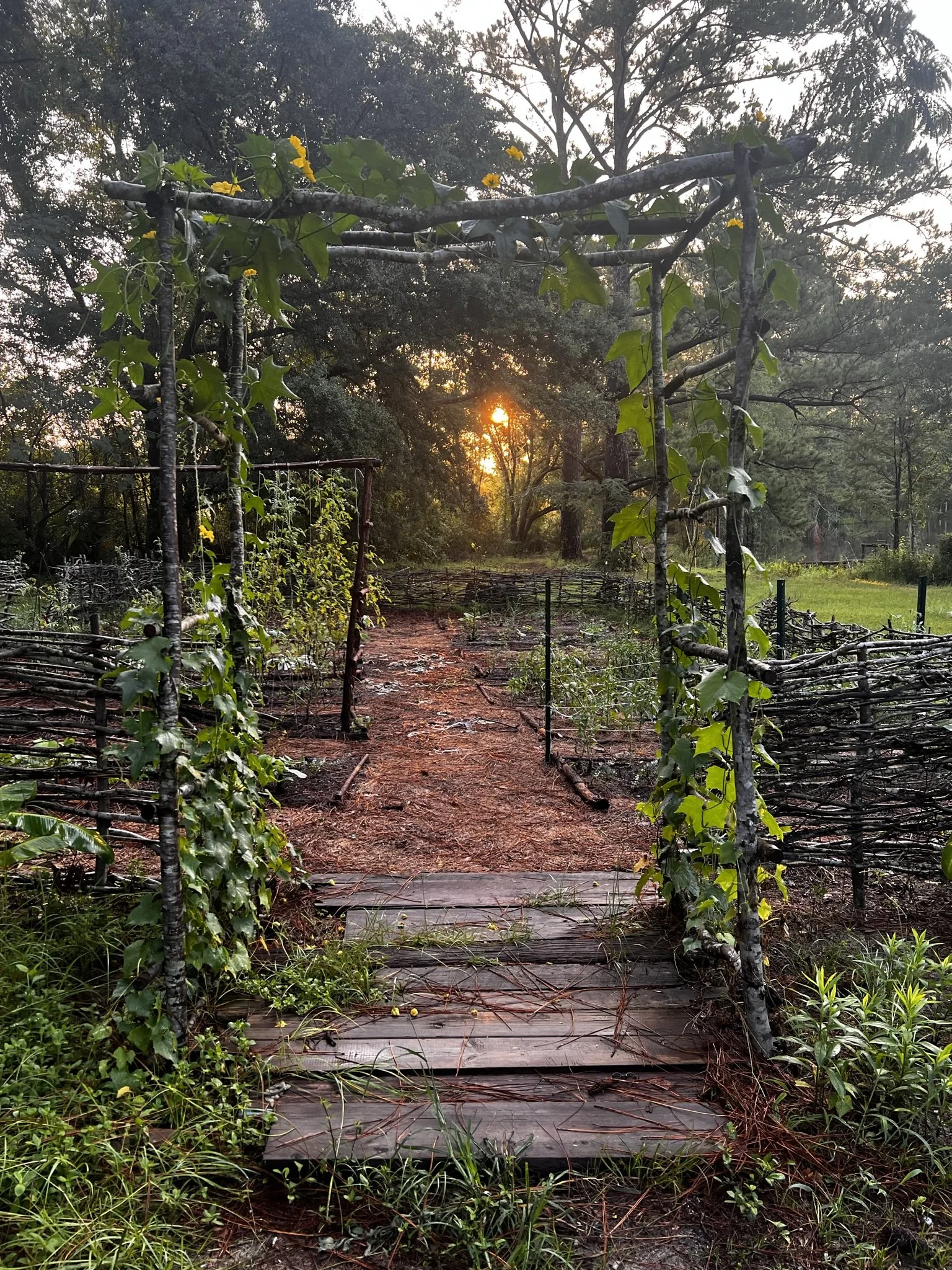Wattle Fence- Tutorial
After leaving my old garden behind, I needed to start a new one. There was a lovely blue hydrangea overlooking the pond and seemed like the perfect place to tuck the garden in. I planned to lay down a silage tarp where I would build the garden. It would need to be fenced in since it backs right up to the woods and wildlife.
The property was overgrown when we move here in 2022. The pond had so many trees too close together or dead ones that needed to be cleared. I noticed there were so many long, slender branches. I started thinking what we could do with them all. It hit me, a fence made out of sticks! I quickly went to researching, got some inspiration and decided on a wattle style fence.
I think the hardest part of the process was gathering and processing the wood. My husband would cut & gather the branches and drag them over to the garden area. I spent many weekends sweating my butt off cutting wood. I would start with a huge pile and breaking it down into stakes, weavers and burn piles.
I used a pole saw and hand saw for the thicker wood and machete for the skinny branches and to clean all the side shoots off each one. I kept the fire going for all the wood I couldn’t use. I cannot tell you the specific types of trees I used, pretty sure it was a lot of wax myrtle, mimosa, and other small saplings.
I sharpened each of the 130 posts with the machete, and pounded them in with a hammer. Once all the stakes were in place I would weave the bendy ones around the stakes. I used kind of an over, under method and then alternate each one so they offset. Starting at the bottom and working all the way to the top. Then just trim off the ends even and clean up any straggly parts. I didn’t measure and tried not to overthink it, which gave it a nice rustic feel. So if you have a lot of wood and time, give it a go! It is very rewarding to create something out of the resources we have.
Now, what would I have done differently? The main issue I have found is that the part of the wood stakes that goes into the ground rots quickly. When it rains the weight of the fence will cause them to snap and the entire section to fall over. For now I have added metal T-posts as support on either side of the fence. I researched how wattle fences were traditionally made. They would typically make “Hurdles” or panels. The panels would be attached to metal posts that would go into the ground. This way they were mobile and also avoid having the bottoms rot out. I will be trying this method next so come back to see my progress.
*As an Amazon Associate, I earn from qualifying purchases made through the links provided. This means that when you make a purchase using those links, I may receive a small commission at no additional cost to you.
























